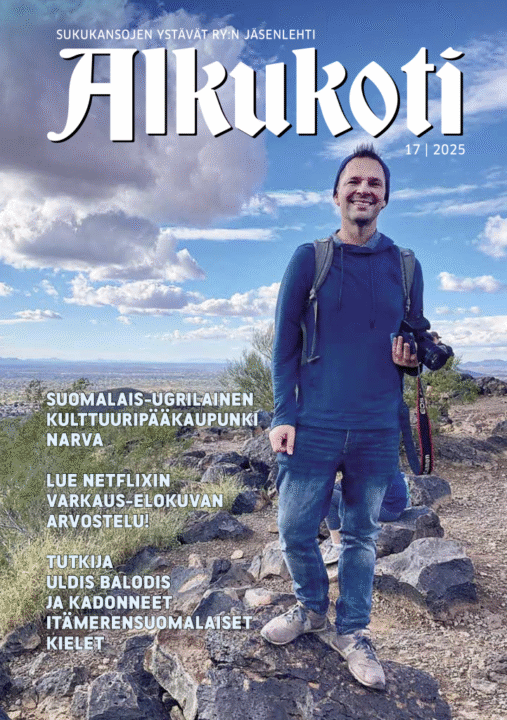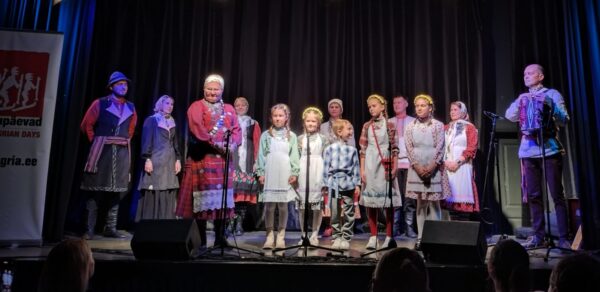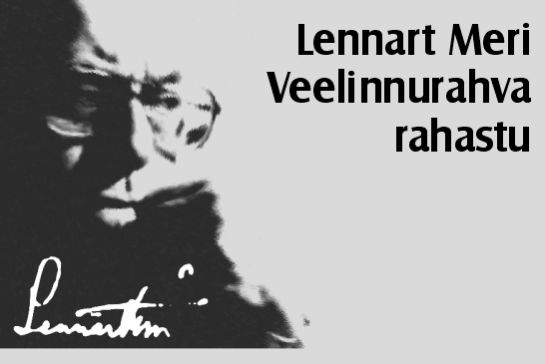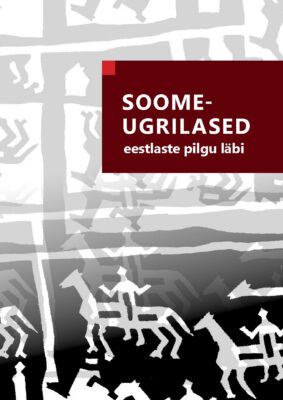New issue of Alkukoti published
The 17th issue of Alkukoti, an annual magazine published by Sukukansojen ystävat ry, was published at the beginning of April. After a break, the association of friends of Finno-Ugric Peoples in Finland has published a substantial issue, including several articles from Estonia.

The opening article of the magazine is “It is customary to bury the dead” by editor-in-chief Esa-Jussi Salminen, in which he writes that the war between Russia and Ukraine, which has lasted for more than three years, has ended cooperation between organisations of Finno-Ugric peoples and these organisations are dead, such as the Consultative Committee of Finno-Ugric Peoples and the World Congresses of Finno-Ugric Peoples organised by the Committee, as well as the congresses of the Association of Finno-Ugric Literatures. However, it is customary to bury the dead, and this is what should be done now, so that new organisations can take their place, which are in no way dependent on the Russian state authorities, Salminen argues. But there are signs of change, he says, pointing to the Estonian Kindred Peoples’ Programme, which used to support Finno-Ugric activists, writers and publications in Russia, but has now started to support and recognise people who develop cooperation between Finno-Ugric peoples in Finland, Hungary or Estonia.
In his opinion piece “What is kindred people work?”, Aleksi Palokangas, chairman of Sukukansojen ystävät ry (Friends of Finno-Ugric peoples), writes that the organisation’s work is to disseminate information about Finno-Ugric peoples and to cooperate with Finno-Ugric peoples. He finds that, unfortunately, Finland has not succeeded in making the Kindred Peoples’ Day an official flag day, because in 2013, when the issue was discussed in the Parliament, the Minister of Culture said that the Kindred Peoples’ Day does not make Finno-Ugric peoples visible in Finland and that the Kindred Peoples’ Day is a matter for the Ministry of the Interior.
Finnic articles
There is also an article on how Narva became the Finno-Ugric Capital of Culture and the reader learns that there is a lot of Finno-Ugric elements in Narva, such as the House of Ingria, where Ekaterina Kuznetsova works, who is the organised of the current Capital of Culture. At the heart of the issue is an insightful interview with linguist Uldis Balodis, a researcher of the Lutsi people and himself a Lutsi native. Balodis talks about his research, the Lutsi language and notes that a Lutsi alphabet is due to be published soon. In the magazine, linguist Santeri Junttila gives an overview of the coastal language spoken in Kolga, Kuusalu Parish, which is heavily influenced by Finnish. In the magazine, we learn about Kaisla Kaheinen‘s dissertation on the etymology and language contacts of the Nganasan language at the University of Helsinki, and about other Samoyed peoples. In addition, the Inari Saami-language collection of short stories The Language That Never Died is reviewed, and indeed, Inari Saami is one of the few indigenous languages whose number of speakers is constantly increasing.
In addition, there is an introduction to Livonian poetry, Udmurt prayers of the Udmurt Traditional Religion, discussions on the Free Nations League and why there are no TV series in the Finno-Ugric languages of Russia, etc.
Issues of the magazine can be seen, for example, in the Fenno-Ugria library. For previous issues and subscription information, see Sukukansojen ystävät ry: Alkukoti-jäsenlehti.


